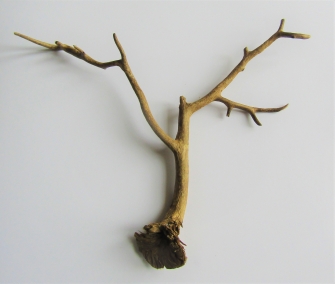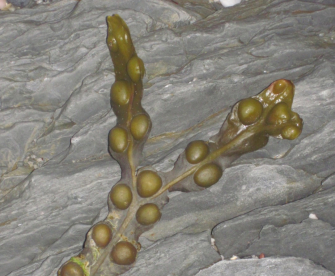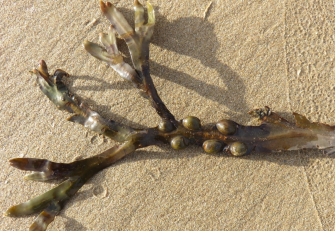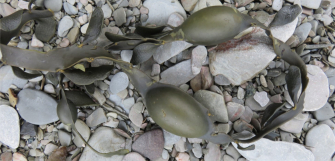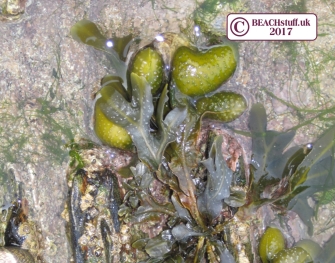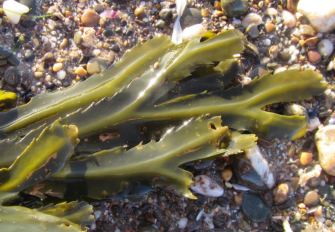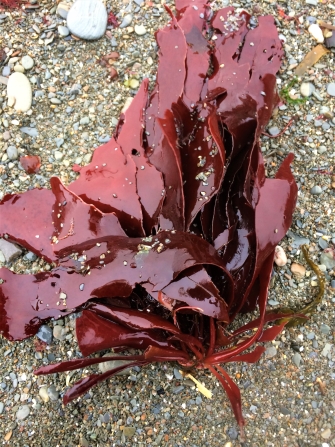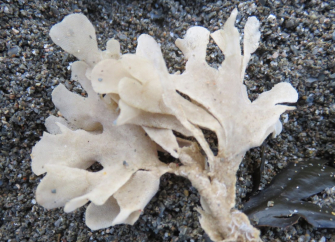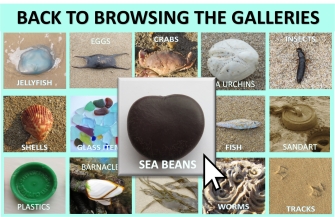
Seaweeds
There are thousands of species of seaweed and, theoretically, a piece of just about any of them could land on any beach. Below, I have picked out some of the more common ones that I find beached.
Be warned, seaweed identification is tricky - you can't really rely on colour (as many seaweeds can be various shades of black, brown, green, yellowish...) or size.
You might also like to get involved in the Big Seaweed Search to monitor our seaweeds. More details from the Marine Conservation Society website.
When growing out at sea, most seaweeds will attach themselves to rocks to keep them safely in one place. However, storms can mean that pieces of seaweed are broken off and this is often what we then find washed up. Occasionally, we can find them with their 'anchor' still attached.
What is seaweed?
You could be forgiven for thinking, as we all do, that seaweed really is a plant - it has 'leaves', it's called 'weed'' but no. It isn't a plant. One of the big differences is the lack of roots. Instead of getting water from the ground, seaweed takes nutrients from the seawater that is all around it. However, seaweeds do photosynthesise, as plants do (ie. using sunlight to make food), although not always using chlorophyll (the thing that makes plants green).
Seaweed is actually an algae; a sort of cover-all term for relatively simple photosynthesising, primarily marine, organisms. They are not plants, not animals, nor fungi. But something else.
Bladder wrack
The round squashy things in wrack seaweeds are air pockets which help the seaweed to float up in the sea to reach sunlight.
On bladder wrack, the air pockets tend to be tightly packed.
More bladder wrack
This shows how the tips of the seaweed can be longer and split. Which can sometimes lead to it being mixed up with serrated wracks.
Knotted wrack
The air pockets in knotted wrack can be really quite large. Ones 8 to 10 centimetres long are not uncommon washed up on our beaches.
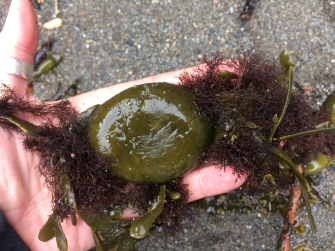
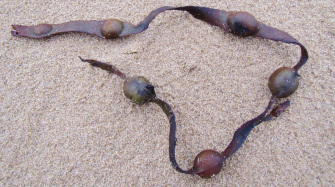
Spiral wrack
This has particularly soft and squishy air pockets that often form a heart shape. The leaves tend to twist and spiral rather than lie flat.

Serrated wrack
Serrated wrack has nice flat fronds that lie down flat and jagged, toothed edges.

Channel Wrack
Like serrated wrack, channel wrack does not have air sacs.
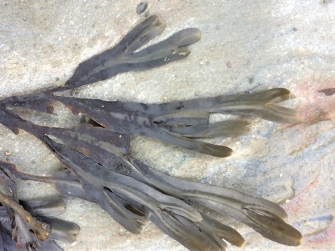
Twisted Wrack
It is possible to see the twists and turns between the air sacs.
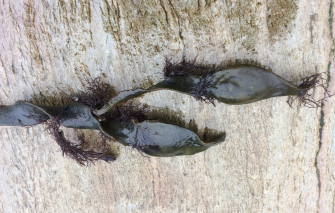
Kelp (Oarweed)
There are many species of kelp - Laminaria. And distinguishing between them would take up another few websites of this size. So I am just going to focus on two - known as Oarweed and (below) Cuvie. Oarweed is generally the smaller of the two, with a maximum height only half that of Cuvie.
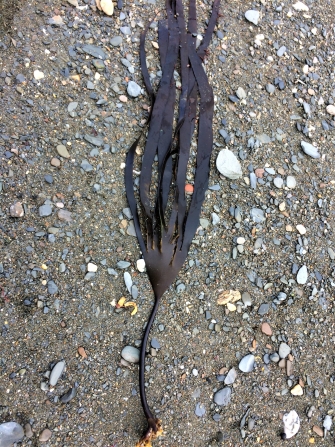
A note on terminology. As seaweed is not really a plant at all, its body parts do not have plant names. The body of kelp is known as the thallus, the 'leaves' are blades' and the 'stem' is the stipe. Still looks like a plant though...
The difference in shape between oarweed and cuvie. Note the ddifferent proportions of blade length and the relative thinness of the stipe in the oarweed in comparison with the thicker, rougher cuvie stipe.

Kelp (Cuvie)
A number of fronds on a thick sturdy 'stalk' which grows in colonies covering pretty large areas under the sea.

Below: a forest of kelp only exposed at very low tide.

Kelp has 'holdfasts', an outgrowth at the base of the stem which holds fast onto rocks keeping the kelp firmly in place.
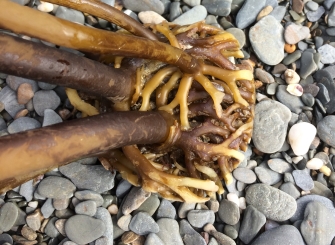

Blue-rayed limpets (below) can be found feeding on the fronds of kelp. They are hard to spot only because they are small, - several centimeters long.

More about blue-rayed limpets on this page.
Furbelows
Furbelows is similar to cuvie and oarweed in that it has a similar thallus (body with blades). The holdfast (pictured below) is very different however.


Sugar kelp or Sea Belt
The fourth (and final) type of kelp we're going to look at here is Sugar Kelp. This one has a single frilly 'leaf' but can also grow very large.
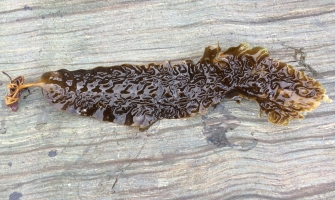

Japanese kelp aka Wakame
undaria pinnatifida
This an invasive species which can grow up to three metres in length and push out native species.


The fronds are softer and thinner than those of native kelp, with a slight wavy texture (above).

Wire weed
Another invasive species, this has quickly become dominant in many areas in the south and west. It was first introduced from the Pacific in the 1970s.


Sea Beech
This can be a very distinctive red seaweed as its 'stem' fades to bright pink which really stands out in a mass of brown/green seaweed stranded on a beach.

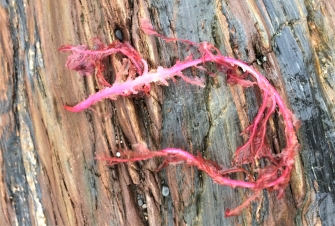
Red Rags
Thick red blades (or 'leaves') and bright red stipes (or 'stems')
.
Dulse
A floppy red seaweed.
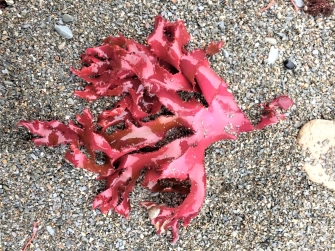
Commonly, it is also found growing on the stipes ('stems') of kelp.


Calliblepharis ciliata
Sadly this seaweed is lacking a common name but it does has extra frondlets around its fronds.
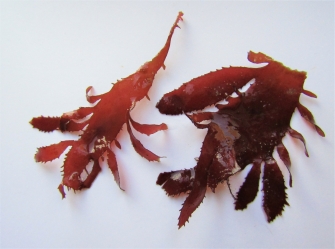
Grape Pip Weed
This is generally reddish-brown but can bleach to all manner of pale forms as in the case of the example below. It is distinguished by its very knobbly appearance.
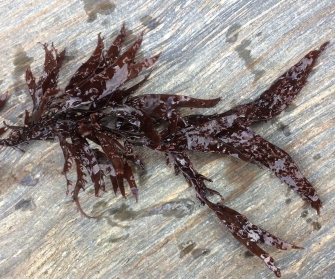
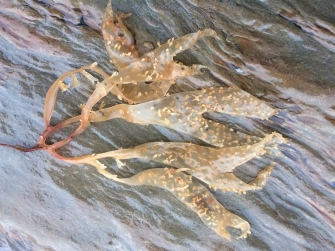

A weed on a weed
Wracks are often found with a red/brown seaweed attached to them. Presumably, the air bubbles of egg wrack enable the free-rider to reach sunlight without having to growing air bubbles of its own. This weed is ploysiphonia lanosa.
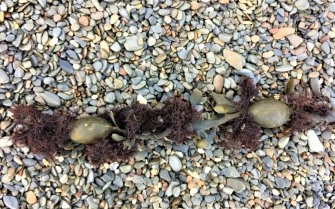

Phycodrys rubens
A delicate seaweed with a tough twiggy 'stem'.
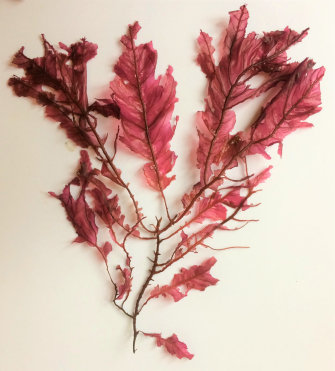
Oyster Thief
This is basically an water/air-filled bubble. It is said that they can grow so large that, in oyster farms, they can float away pulling their oyster anchor with them. Hence the name.

Thongweed
Well, I think that speaks for itself.
Think this is the only strandline find to be named after underwear? Oh no. Have a look at nicker beans...


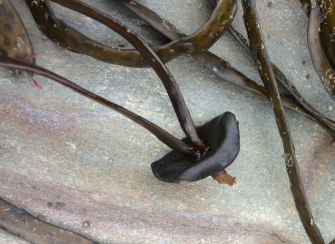
Mermaid's Tresses
Like thongweed, mermaid's tresses are long thin blades. However, the tresses are round rather the flat blades of thongweed.
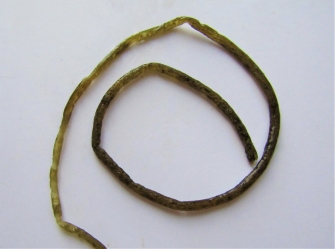
A comparison of mermaid's tresses (top) and thongweed.
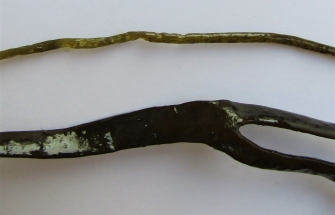
Landlady's wig
Desmarestia aculeara
Poor woman! Who told everyone it was a wig?!


Landlady's Wig
Ahnfeltia plicata
Another seaweed called Landlady's wig - this one has smooth fronds rather than the notched edges of Desmarestia aculeara above. As Ahnfeltia plicata ages, its usual brownish hue can fade to purple.
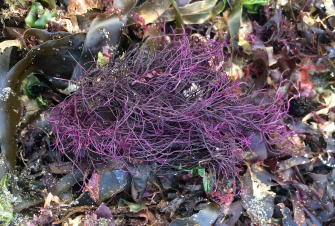
Cock's Comb
Staying on the subject of hair, we now have a comb. And I'll leave it there.
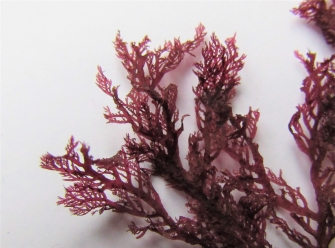
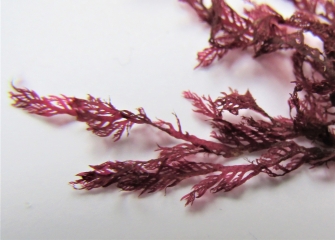
Sea Lettuce
I think a more accurate name would be Sea Boiled Lettuce as it always feels like its Iceberg Lettuce crispness has been boiled out of it. Very green, very floppy.
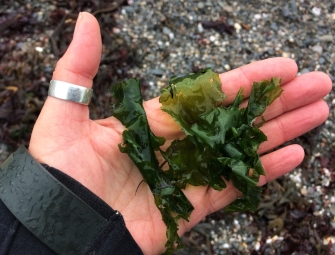
Sea lettuce growing in a rockpool.

Gutweed
This is a common rockpool plant. The thin 'leaves' are actually tubes which fill with air when it is in the water. The picture below shows gutweed left draped drying over the rocks as the tide has gone out.
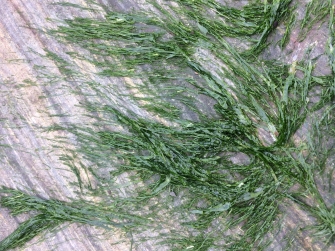

Coral weed
It is often seen growing in rock pools. Generally pinkish to a greater or lesser degree, it comprises of tiny segments which gives it a skeletal appearance.
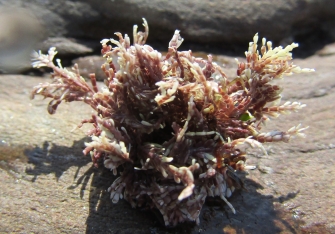
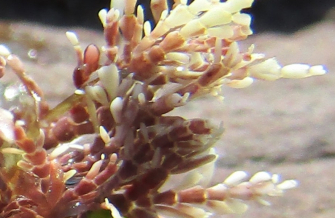
Bead weed
A red algae which is made up of little segments. It is less anatomical and more like a succulent plant than corral weed.
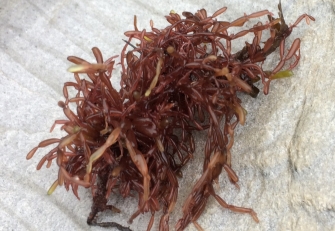

Irish Moss
A small rockpool plant. Just to clarify, it isn't moss, nor is it particularly Irish.
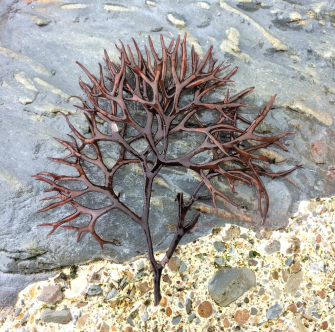
Below, Irish moss is pictured underwater, anchored in a rockpool.
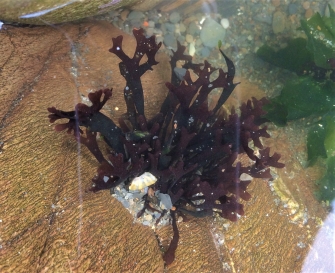
Pterothamnion plumula
This very delicate red alage is a common seaweed of rockpools. When washed up on the beach, it can look a but like a red mush so I photographed this one in a rockpool so it could open up in the water.
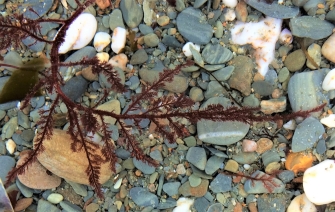
Pepper Dulse
It is a flat seaweed ie. does not bush out but is extremely thick and squishy. A common inhabitant of the rockpool zone.

Things that look like seaweed but aren't seaweed...
Horn wrack
Hornwrack isn't actually a wrack - it isn't even seaweed at all. It is actually a colony of animals called bryozoan.
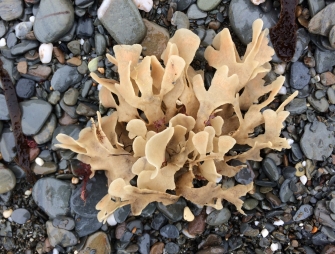
Unlike seaweed, it is vey soft, and material-like, to touch.
A close-up of hornwrack.
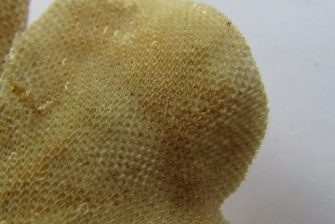
Sea Mat
This is another bryozoan - a colony or organisms which coats sea weed.For more on Bryozoans, have a look at this page
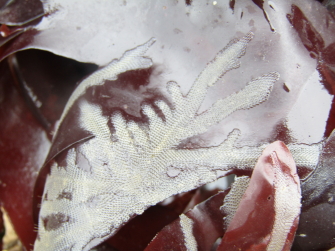
A close-up of sea mat

Sea Fan
Occasionally found amongst the seaweed can be found slightly twig-like pieces of sea fans. These are actually a type of coral and as such are a colony of polyps rather than a single organism. They can be distinguished from 'twigs' by virtue of them not being 'bushy' but lie flat and the roundish 'holdfast' with which they were once attached to a rock.
